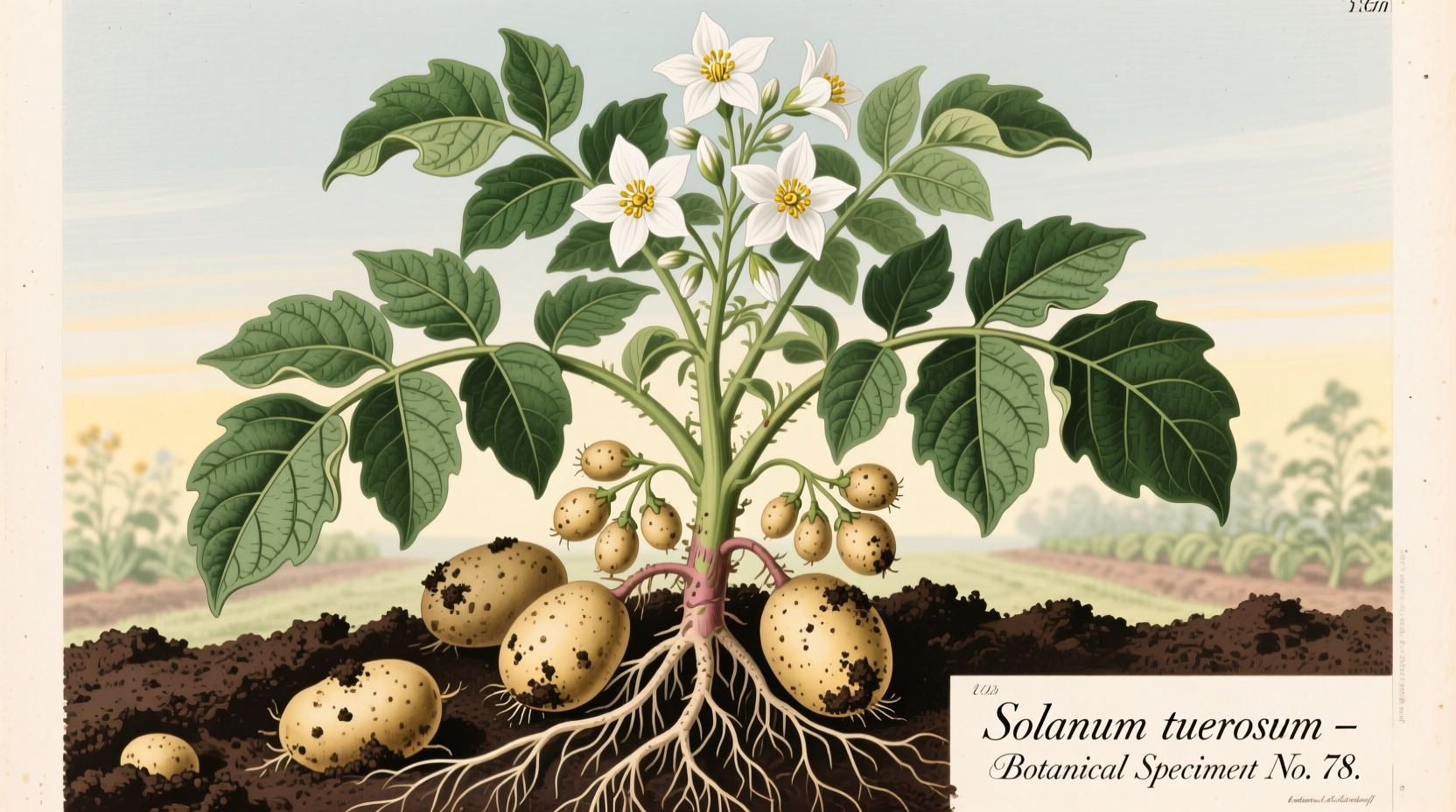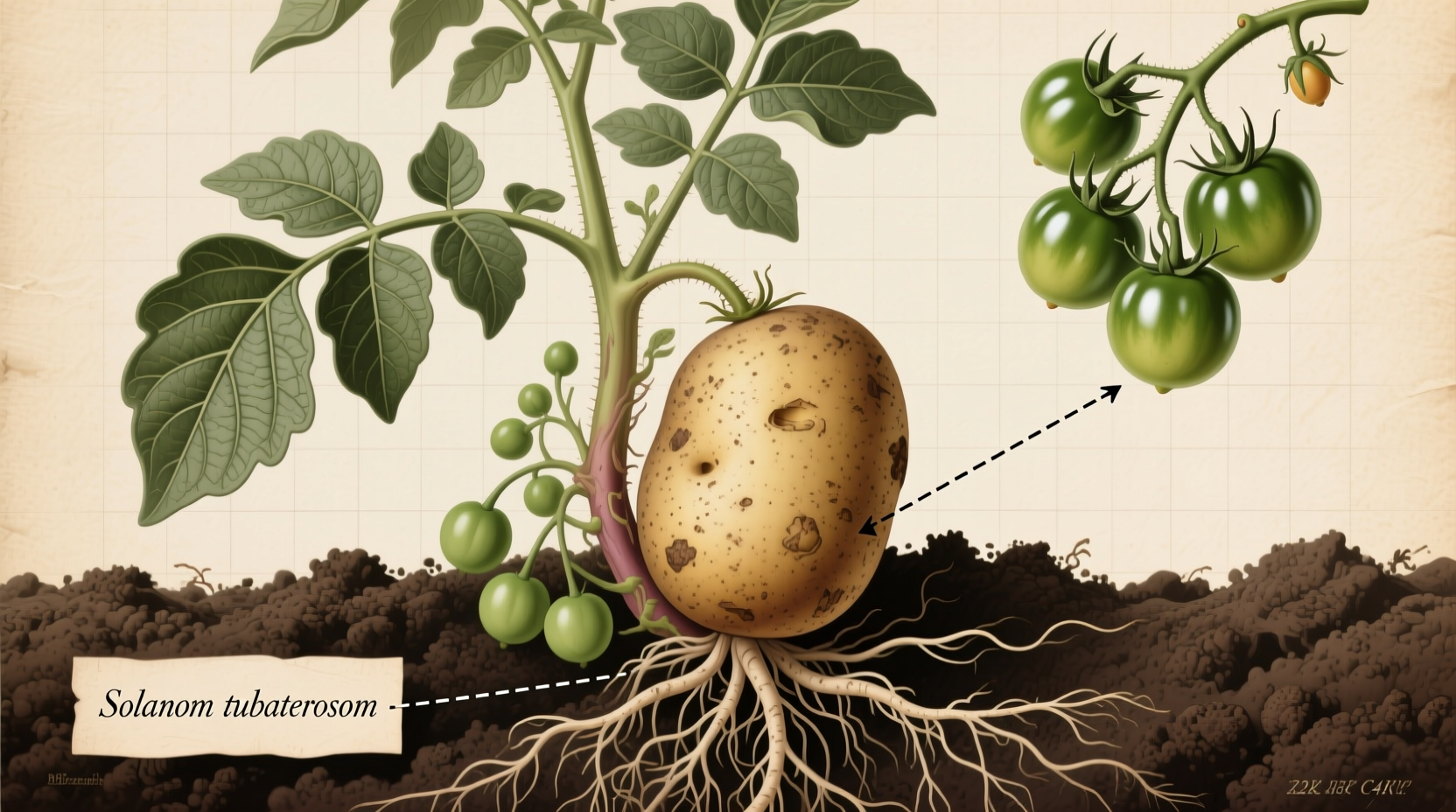Short answer: Potatoes are botanically classified as vegetables, specifically as tubers. While fruits develop from the flowering part of a plant and contain seeds, potatoes grow from underground stems called stolons and store energy for the plant. This scientific classification makes potatoes vegetables, not fruits.
Ever found yourself in a kitchen debate about whether potatoes qualify as fruits or vegetables? You're not alone. This common confusion stems from mixed messages in culinary contexts versus botanical science. Understanding the true classification matters for cooking, nutrition, and even gardening. Let's clear up this potato puzzle once and for all with evidence-based facts you can trust.
Botanical Science: Why Potatoes Are Vegetables, Not Fruits
From a strict botanical perspective, the distinction between fruits and vegetables comes down to plant anatomy and reproductive function. Fruits develop from the ovary of a flowering plant and contain seeds. Think apples, tomatoes, or cucumbers—all develop from flowers and house seeds.
Potatoes (Solanum tuberosum), however, are modified underground stems called tubers. They form from swollen stolons (horizontal underground stems) that store starch to nourish the plant. Unlike fruits, potatoes don't develop from flowers and contain no seeds. The actual fruit of the potato plant is a small, green, tomato-like berry that's inedible and often toxic.
| Characteristic | Fruits | Vegetables (Tubers like Potatoes) |
|---|---|---|
| Plant Origin | Develop from flower ovaries | Modified stems or roots |
| Seed Presence | Always contain seeds | No seeds (reproduce via eyes) |
| Primary Function | Seed dispersal | Energy storage for plant |
| Examples | Tomatoes, cucumbers, peppers | Potatoes, sweet potatoes, yams |
Culinary Classification: Why Chefs Treat Potatoes as Vegetables
In cooking contexts, classification follows usage rather than botany. The USDA and culinary professionals categorize foods based on flavor profile, preparation methods, and meal role. Potatoes:
- Have a starchy, neutral flavor profile typical of vegetables
- Appear in savory dishes rather than desserts (with rare exceptions)
- Count toward daily vegetable intake recommendations
- Require cooking to be palatable (unlike most fruits)
The USDA's MyPlate guidelines explicitly list potatoes in the vegetable group, noting they "provide important nutrients like potassium and vitamin C." This practical classification aligns with how we actually use potatoes in meals worldwide.

Common Misconceptions Explained
Several factors contribute to the potato confusion:
The Tomato Paradox
Many people know tomatoes are botanically fruits but culinarily vegetables. This exception makes them wonder if potatoes might follow the same pattern. However, tomatoes develop from flowers and contain seeds—making them true botanical fruits. Potatoes lack both characteristics.
"Root Vegetable" Misnomer
Potatoes are often called root vegetables, but they're technically stem tubers. True root vegetables (like carrots and beets) are modified roots. This terminology overlap creates confusion about plant biology.
Historical Classification Shifts
Before modern botany, classification was based on usage. Potatoes entered European cuisine in the 16th century as "earth apples" (terrae pomum in Latin), contributing to fruit-like associations. The Royal Horticultural Society's historical records show potatoes were initially grouped with fruits in some 17th-century herbals due to their unfamiliar growth pattern.
Practical Implications for Home Cooks
Understanding potato classification affects real cooking decisions:
- Storage: Unlike fruits that often ripen after picking, potatoes shouldn't be stored with fruits (especially apples) which emit ethylene gas that causes sprouting
- Nutrition: As vegetables, potatoes count toward your daily vegetable intake but lack the vitamin C degradation seen in many fruits during storage
- Cooking methods: Their starch composition responds better to boiling, roasting, or frying than the raw consumption common with fruits
The University of California Agriculture Department confirms that proper potato storage at 45-50°F (7-10°C) maintains quality for months—unlike fruits that typically require refrigeration only after ripening.
How Potatoes Compare to Other Common "Confusing" Foods
Food classification often creates debate. Here's how potatoes stack up against other commonly questioned items:
- Tomatoes: Botanical fruit (develop from flower, contain seeds), culinary vegetable
- Cucumbers: Botanical fruit (same reasons as tomatoes), culinary vegetable
- Peppers: Botanical fruit, culinary vegetable
- Potatoes: Botanical vegetable (tuber), culinary vegetable
- Avocados: Botanical fruit, often used as vegetable in cooking
The key distinction: Potatoes are one of the few common foods that align with both botanical and culinary classifications as vegetables. This dual consistency makes them unique among frequently debated foods.
Why This Classification Matters Beyond Trivia
Accurate food classification has real-world impacts:
- Nutrition labeling: The FDA requires accurate categorization for dietary guidelines
- Agricultural policies: The USDA's National School Lunch Program treats potatoes as vegetables
- Gardening practices: Knowing potatoes are tubers affects crop rotation and soil management
- Food safety: Proper classification informs storage recommendations to prevent spoilage
According to the American Society of Plant Biologists, misclassification can lead to improper storage that reduces nutritional value by up to 30% within weeks. Understanding potatoes as vegetables helps consumers maximize their health benefits.











 浙公网安备
33010002000092号
浙公网安备
33010002000092号 浙B2-20120091-4
浙B2-20120091-4